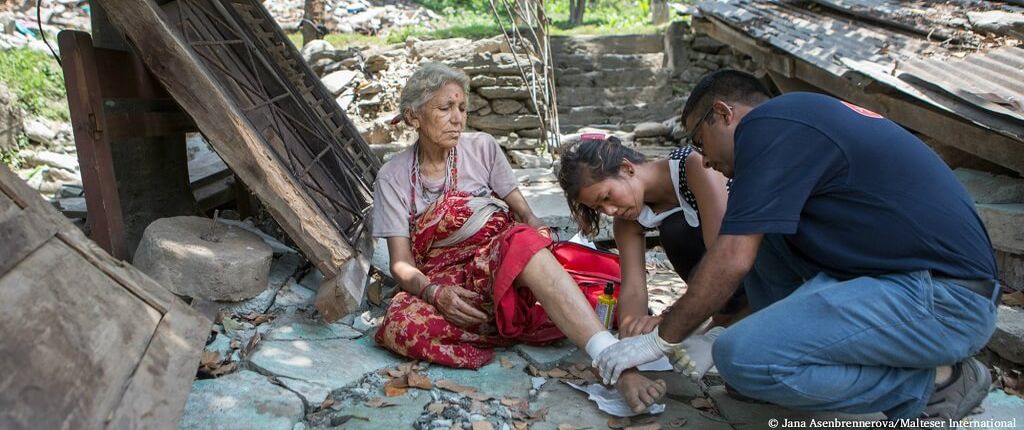
Relief after the earthquake
The official death toll following the devastating earthquake in Nepal stands at 8,699. More than 22,000 people were wounded during the disaster. According to the Nepalese government, over half a million houses were destroyed or severely damaged, and around 2.8 million people were left without a home.
The UN estimates that the disaster affected circa 5.6 million people. Many thousands of these are children. Damage and destruction to essential infrastructure such as schools, roads and hospitals was widespread following the earthquake, and although recovery is underway, it will be years before the most severely affected areas return to a standard of living comparable to that which they enjoyed before the disaster. The earthquake left an estimated 870,000 children no longer able to attend school, as their buildings and classrooms have been destroyed, while 1,146 medical facilities were destroyed or severely damaged.
Beyond the physical damage caused by the earthquake, the psychological damage left in the wake of the widespread death, devastation and destruction is great. Recovery is slow, and fear for the future is widespread. Because of the limited resources available, many people continue to live in temporary shelters, with only the most basic supplies, and in conditions where the provision of water and sanitation is often insufficient – leaving them vulnerable to sickness. The geography of the country – where many villages are only reachable by precipitous mountain roads that are often blocked by landslides, makes the task of rebuilding even more difficult.
Securing survival, shelter and medical care for the affected population in the rural districts of Kavre and Sindhupalchok, working in cooperation with local partners and close collaboration with the WHO.
- Emergency medical aid and psychological support for survivors of the earthquake at Kathmandu Airport and from the premises of the German Embassy.
- Distribution of food, hygiene articles, blankets and tarpaulins to around 28,000 people (4,600 families) in the districts of Kavre and Sindhupalchok.
- Support for hospitals in the districts of Kavre and Sindhupalchok with medical specialists, medicines and medical equipment.
- Equipping and operating a field hospital at Lamosanghu in the north east of the Sindhupalchok district - around 40km from the Chinese border.
- Distribution of tools and rental of heavy equipment to clear rubble and debris in the villages aided by Malteser International.
- Construction of model houses constructed from local materials, and training of local people in the construction of emergency shelters.
- Construction of latrines to improve the health of the population.
- Repair and reactivation of water reservoirs, and pipes for drinking water.
- Construction and equipment of basic health posts with essential equipment and medication.
- Distribution of winter relief materials including blankets, tarpaulins, smoke-free stoves, solar lamps and warm clothing for families.
Country info
Capital: Katmandu
Area: 147,181 km²
Population: c. 27.8 Million
Project data
Project duration: since April 2015
Donors: European Union (ECHO), German Federal Foreign Office, ADH - Germany's Relief Coalition, Nachbar in Not, Röchling Foundation, private donations
Partner: Rural Self-Reliance Development Centre (RSRD), Kathmandu University, Dhulikel Hospital
Last updated: July 2016








